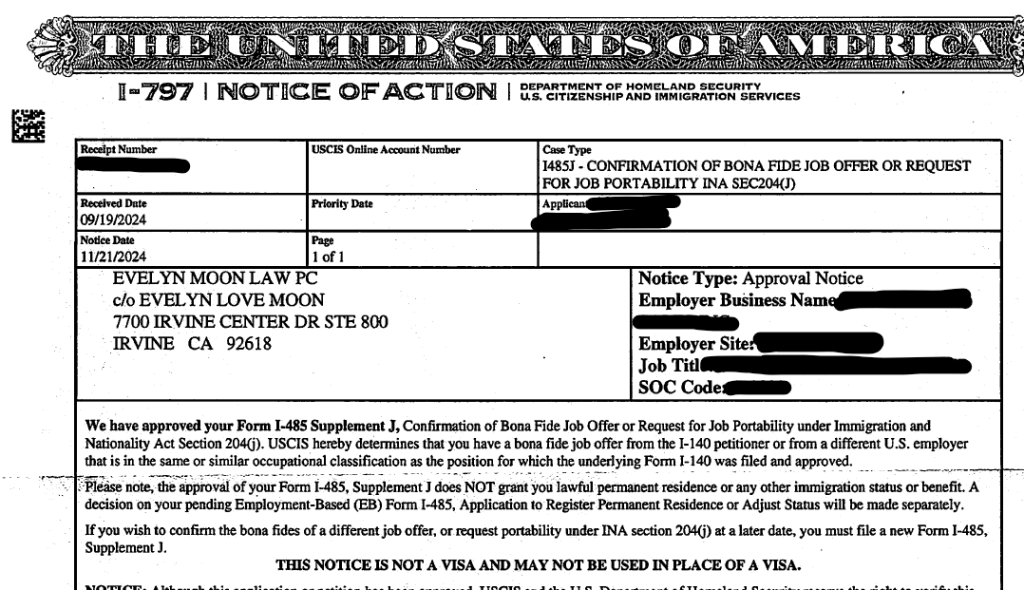
Our office recently successfully obtained the I-485J approval for one of our clients, who wanted to change to a different employer, while his I-485 was still pending! How is this possible?

Under AC21, you can change jobs if your I-485 green card application has been pending at least 180 days, provided the new job is in the “same or similar” category as your original position. If you’ve been with your current employer for at least 180 days since filing your I-485, you’re eligible to “port” your green card application to a new employer or even your own startup so you can be self-employed. Acting before January 20, 2025, can help you avoid unnecessary complications, especially if your employer is financially unstable, reorganizing, or closing.
Changing jobs during the green card process isn’t just about securing new opportunities. It’s also about avoiding potential problems during naturalization. During the Trump administration, scrutiny increased for applicants who had employment-based green cards but worked only briefly less than 6 months —or not at all—for their sponsoring employer. Although there is no specific rule requiring you to remain with the sponsoring employer for six months after the I-485 green card is approved, we typically recommend staying for this period as a reasonable precaution to avoid potential fraud claims. By porting your green card application to a new employer or your own business via Form I-485J under AC21, you can preserve your eligibility and avoid accusations of system misuse and the appearance of fraud.
If circumstances prevent you from porting before your green card is approved, and you are either laid off or must change your job within less than six months, take steps to protect yourself:
With potential immigration policy changes on the horizon during the Trump 2.0 era, acting promptly is critical. Proactively transitioning to a new role or business ensures you’re well-prepared, regardless of future immigration shifts.
If you’re considering a job change, concerned about employer stability, or pursuing a startup:
The 180-day portability rule under AC21 offers a vital safety net for those navigating job changes or employer instability. Acting now can secure your green card process and future naturalization.
If you need assistance, I’m here to help guide you every step of the way.